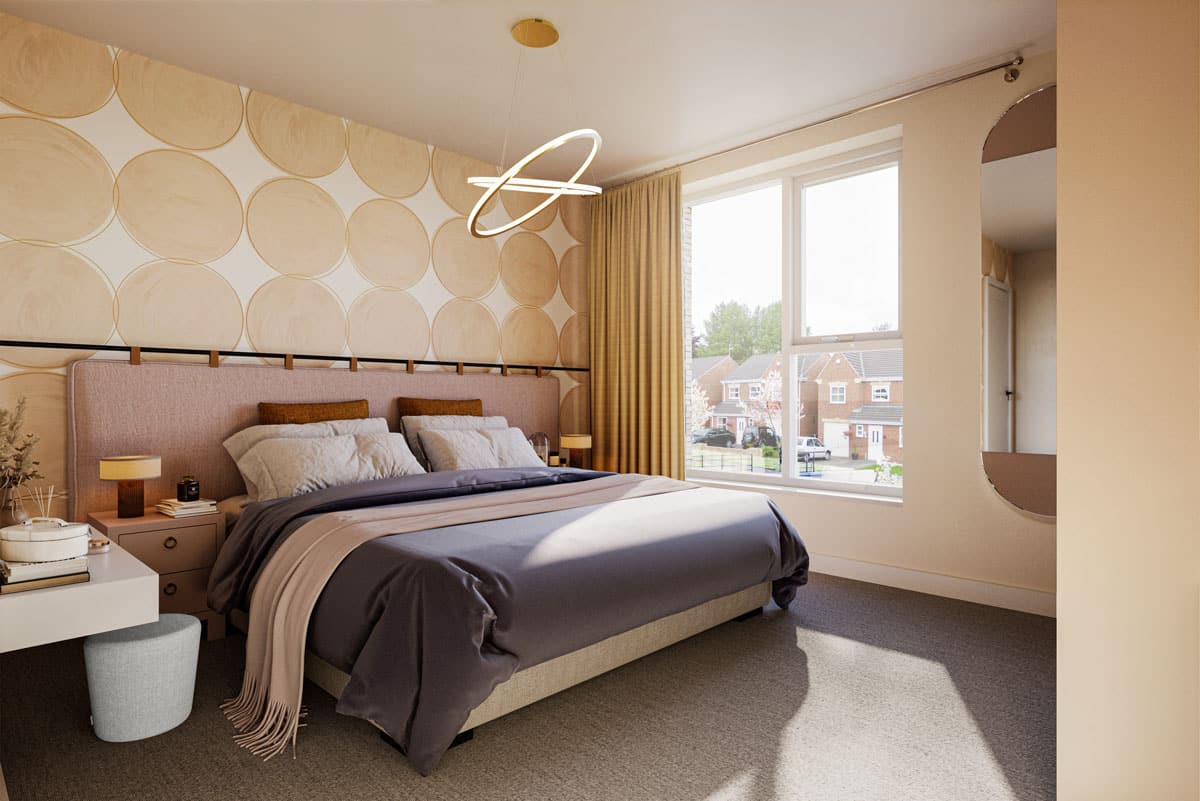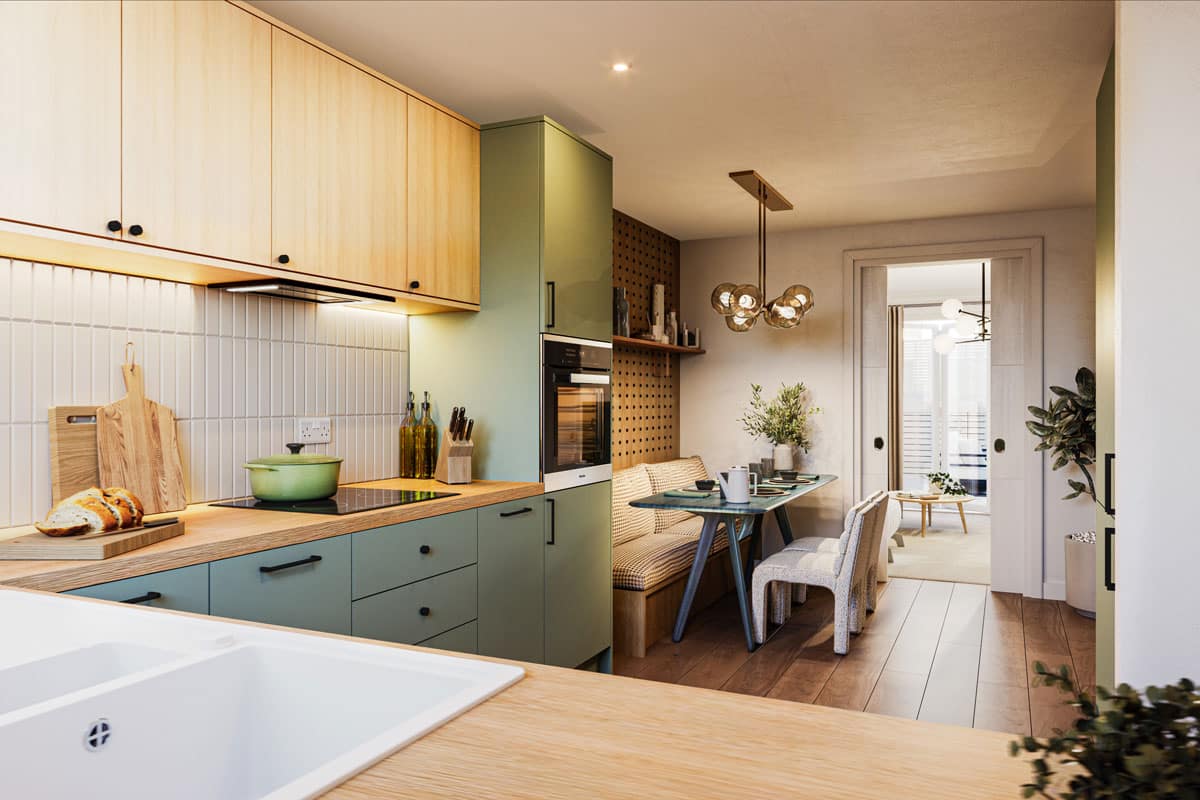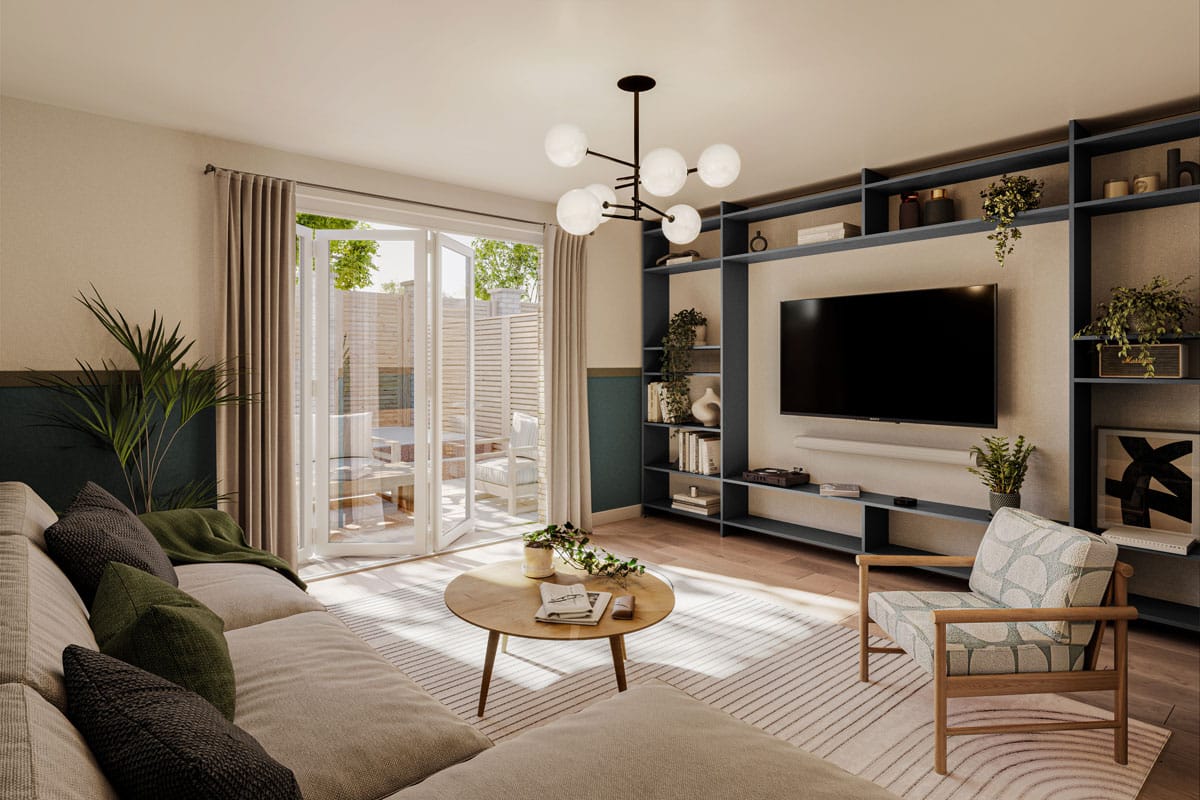Make room for colour
Top tips on using colour to make your new home feel special
If you want to make your new home look beautiful and reflect your personal tastes, colour is the key.
It’s a simple, powerful way to turn a room into a calm retreat or lively social space – whatever you need it to be, the right colours can make all the difference.
In this article, Forge design lead Katie Sweeney shares 10 top tips for using colour, ideas for different rooms and features, and key trends to watch out for in 2025/26.
Ten tips for using colour
- Choose mood/emotion first
Decide how you want to feel in each room – calm (soothing blues, natural greens), cosy (dark/rich tones), or energised (warm and vibrant colours). - Use neutrals as a base
Whites, greys, and taupes create a calm, versatile and timeless backdrop that’s easy to update. Be careful when choosing the undertone of your neutral, as this is integral in delivering the right mood. - Add personality with accents
Bring in bold or earthy tones through cushions, rugs, or a feature wall for character. - Create flow between rooms
Stick to a consistent undertone (warm or cool) so colours transition smoothly. - Don’t fear the dark
Deep shades can make spaces feel intimate, atmospheric and luxurious – especially when well-lit. Consider how to use darker colours to enhance or alter the proportions of a space. - Be inspired by nature
Earthy and natural tones feel timeless and grounding. - Test with lighting in mind
Colours look different in natural vs. artificial light – sample before you commit. - Use colour psychology
– Bedrooms: cool or muted tones
– Kitchens: warm, social shades
– Bathrooms: light, spa-like hues - Layer colour with textures
Bring in colour through fabrics, art, and plants – not just paint. Interiors with more tones feel more soothing than those with high-contrast colour pallets - Make it yours
Choose colours that reflect your personality, not just trends. Follow and trust your instinct.

Where and how to use colour in interiors
- Walls – big impact. Go bold for drama or soft tones for calm. Try feature walls or colour blocking.
- Ceilings – often overlooked. Light tones open up; darker tones add cosiness.
- Floors – use rugs or painted floors to ground the space and introduce texture or pattern.
- Furniture – add personality with colourful sofas, chairs, or painted pieces.
- Soft Furnishings – cushions, curtains, and throws are easy ways to layer in colour and texture.
- Kitchens and bathrooms – try coloured cabinets, tiles, or even grout for a stylish twist.
- Trim and doors – paint in contrast or complement to walls for subtle but striking detail.
- Decor and art – use accessories and artwork to inject flexible, personal colour.
- Plants – add fresh, natural greens that suit any palette.

Colour for different spaces and rooms
Hallway
Goal: welcoming, light-enhancing
- Light neutrals (off-white, soft grey, warm beige) to brighten and open up.
- Sage green, dusty pink, or muted blue for a soft, inviting feel.
- Consider a bold door or trim for interest in small spaces.
Lounge/living room
Goal: relaxing, sociable, versatile
- Warm neutrals (greige, taupe) create a calm backdrop.
- Deep tones (navy, forest green, rust) add cosiness and depth.
- Layer in accent colours through cushions, rugs, or art.
Kitchen
Goal: energetic, clean, welcoming
- Soft whites or cool greys for a clean, modern look.
- Warm shades (terracotta, olive, mustard) encourage appetite and conversation.
- Add colour through cabinets, tiles, or accessories.
Bathroom
Goal: fresh, clean, spa-like
-
- Crisp white, pale blue, or eucalyptus green for a relaxing vibe.
- Use charcoal, navy, or blush for modern elegance.
- Tiles or painted ceilings can be great spots for a splash of colour.

Top interior trends for 2025/26
- Sustainable design
Eco-friendly materials, energy-efficient systems, and biophilic elements (like plants and natural light). - Curved and organic shapes
Rounded furniture, arched doorways, and soft forms replace harsh angles. - Multifunctional spaces
Adaptable layouts and modular furniture to suit flexible, hybrid living. - Statement lighting
Sculptural, bold light fixtures become design focal points. - Colour drenching
Using one colour across walls, trim, and ceilings for a unified, immersive look. - Wellness spaces
Calm, dedicated zones for relaxation, yoga, or mindfulness, using natural materials. - Textured surfaces
Walls and ceilings with plaster, panelling, or textured wallpaper for added depth. - Mixed metals
Combining finishes like brass, black, and chrome for a layered, modern look. - Rustic modern
Reclaimed wood, stone, and vintage finds for a cosy, eco-conscious aesthetic.